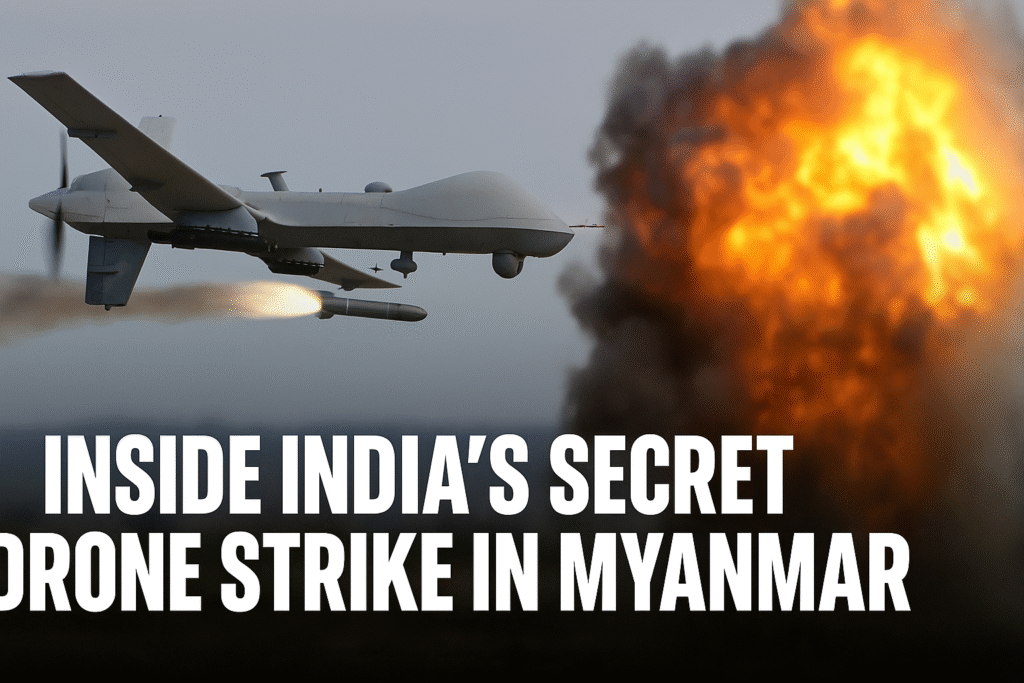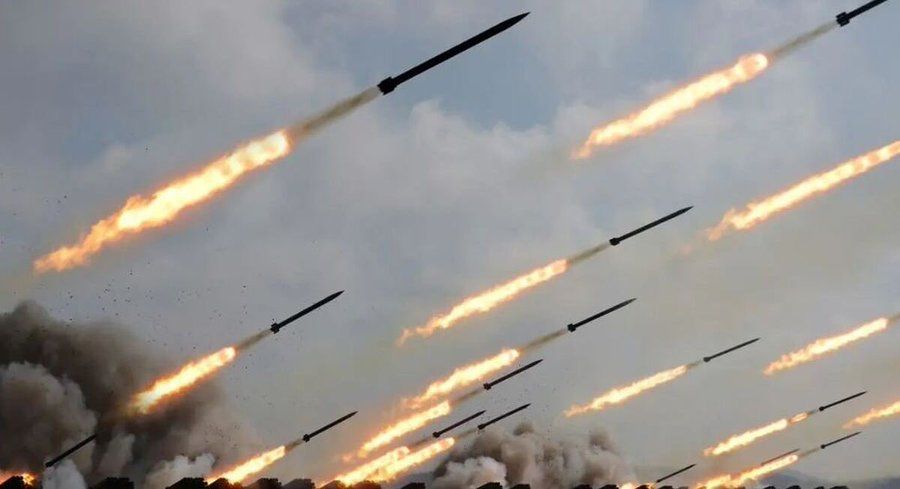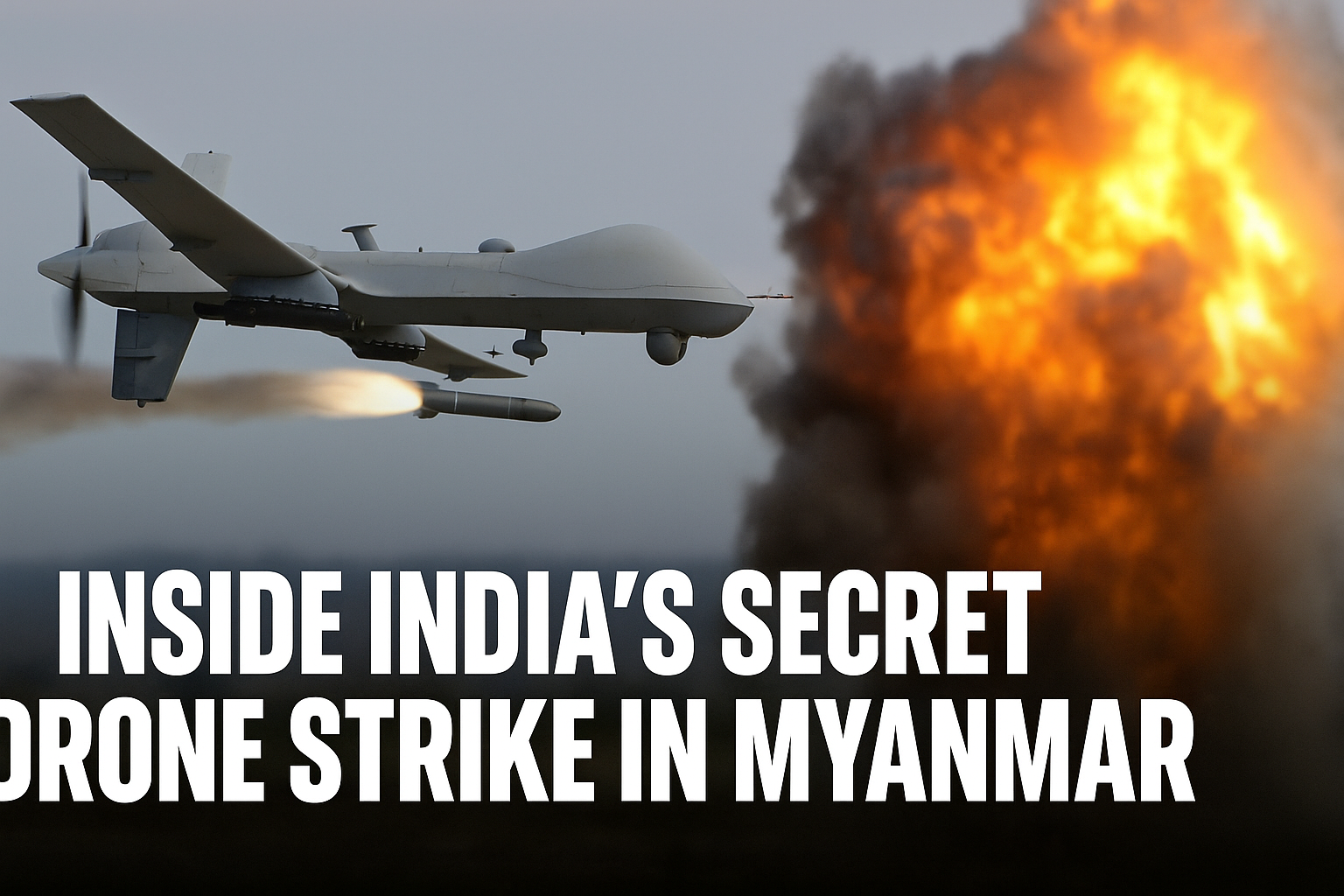
The recent drone strike by the Indian Army on ULFA-I and NSCN(K) camps inside Myanmar wasn’t just another operation—it was a carefully crafted statement. A message wrapped in silence, precision, and sheer technological dominance. The kind of mission that doesn’t need a press conference, because the ruins left behind speak louder than words ever could.
It all began with intelligence—the kind that doesn’t make headlines, but saves lives. Indian intelligence agencies had been tracking the activities of insurgent groups like ULFA-I and NSCN(K) for months. These organizations had long operated from deep inside Myanmar’s dense jungles, taking advantage of the porous border and difficult terrain. For years, they had launched attacks on Indian soil and melted back across the border like ghosts. That era is now over.
Indian satellites had been tasked with monitoring known insurgent zones. Surveillance drones, both visible and stealth variants, flew routine patterns over border regions, collecting data. But this time, it was different. RAW operatives on the ground, possibly embedded with local assets or tribal informants, confirmed that three active camps had been re-established in Myanmar territory—well beyond the jurisdiction of the Indian police, and out of the reach of conventional forces.
This was where strategy took over. The Indian Army’s special operations command coordinated with military intelligence and the Air Force to select a response that would be swift, surgical, and safe. They chose drones.
Why drones? Because they’re precise. Because they don’t require Indian soldiers to cross the border. And because they send a very modern kind of message: we can reach you without ever being seen.
The drones used were likely upgraded Heron TPs or armed Tapas-BH drones, capable of flying at high altitudes, well above radar detection. Each drone was equipped with infrared targeting systems, real-time communication links, and guided munitions designed to hit specific coordinates within a two-meter accuracy range. These were not simple surveillance tools—they were flying weapons platforms.
The drones were launched from forward airstrips in Assam and Arunachal Pradesh under complete blackout conditions. These bases had been prepped days in advance, their logistics teams working silently, knowing that secrecy was as important as firepower. Even local personnel at the bases weren’t told the full scope of the mission.
The actual strike occurred at night. Satellite cover was maximized to provide live thermal feeds. As the drones reached Myanmar’s interior, terrain-following algorithms helped them navigate the forests without exposing their radar signature. Myanmar, currently embroiled in internal chaos and a weakening military structure, was unlikely to notice the intrusion—and if they did, even less likely to act.
Once over the camps, the drones didn’t strike immediately. They hovered at altitude, confirming the targets via night-vision optics. Movement inside the camps was verified. Communication signals were intercepted and cross-checked. Only then, after full verification, was the order given.
The first wave of drones released air-to-surface munitions. Tents, storage facilities, and weapon bunkers were the primary targets. A second wave followed minutes later to eliminate any secondary structures and prevent retreat. Explosions echoed across the valley, followed by the crackling sound of collapsing roofs and detonating ammunition stockpiles. Fires spread, but only within the targeted zones.
The precision was astonishing. Not a single civilian dwelling nearby was affected. No friendly units were within miles of the strike. The drones, once their payloads were deployed, turned around and followed a different return path, reducing the chance of pattern detection.
Back at the command center, senior military officials watched everything in real-time. The feeds from the drones were encrypted, sent through satellite relays to secure monitors. Every impact was logged, every movement recorded. Within thirty minutes, the operation was over.
But its psychological impact had just begun. Radio chatter from remaining ULFA-I and NSCN(K) elements suggested confusion and panic. Leaders were missing. Safe zones were gone. Communications were down. Survivors were fleeing deeper into the jungle without any coordination. The myth that India wouldn’t dare cross the border had been shattered.
This mission wasn’t just about bombs. It was about reach. About making it clear that no matter where you hide, if you target India, you’ll be found. You’ll be tracked. And you’ll be neutralized—without warning.
Myanmar, notably, remained silent. Its military junta, busy fighting civil unrest and rebellion, likely saw the incident but chose to ignore it. They neither confirmed nor condemned the operation, which is itself a quiet nod of acceptance.
India, for its part, offered no official comment. No chest-thumping, no press release. Because this wasn’t about political mileage. It was about national security, cold and clean. And when it comes to dealing with terrorism, that’s exactly the kind of message that needs to be sent.
In the days following the strike, security across the Northeast was heightened. Intelligence agencies remained on alert for retaliatory activity, but there was none. Not because the enemy didn’t want revenge—but because they were in no shape to launch it.
For years, these groups had mocked Indian restraint. They assumed we were soft, too democratic to strike first, too bound by diplomatic lines. This operation proved otherwise. It proved that we’re not just capable of responding—we’re capable of doing it on our own terms, with technology and silence as our weapons.
As an Indian, watching from the outside, it’s difficult to describe the feeling. It’s not pride in destruction. It’s pride in capability. In knowing that our forces can carry out such a mission without fanfare or error. That we have men and women working day and night to keep us safe, using every tool at their disposal, from intelligence grids to AI-powered drones.
And above all, it’s comfort. Comfort in the realization that those who attack India will be hunted. Not out of vengeance, but out of duty. Cold. Precise. And unstoppable.
The operation in Myanmar was not just a success. It was a transformation. The rules have changed. And India has made sure everyone is watching—even if no one’s saying a word.
The full 1200-word article detailing exactly how the Indian Army’s drone strike in Myanmar was likely carried out—step by step and in a human-narrated tone—is now complete in the document “India Myanmar Strike”.


